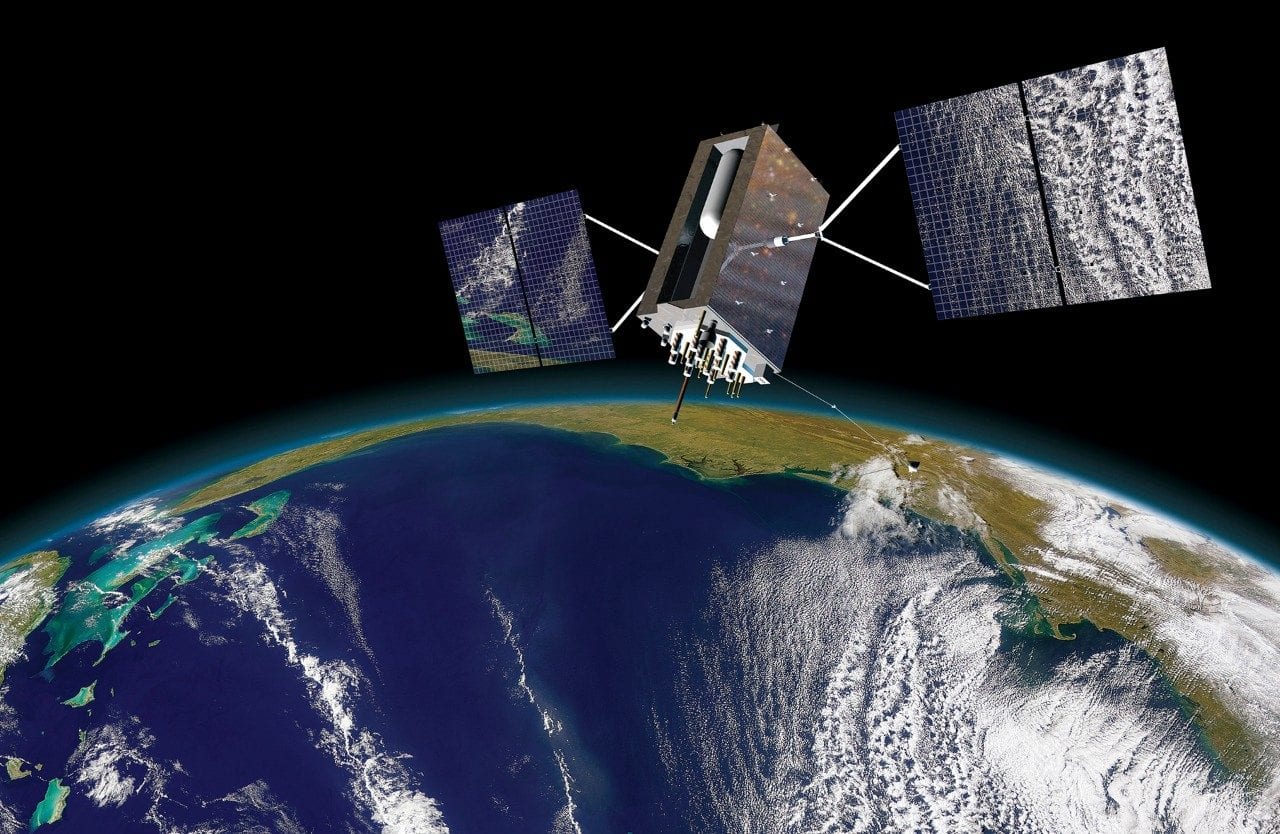
GPS III satellites are to feature improved accuracy, service life, and anti-jamming capabilities. Photo: Lockheed Martin
Aircraft will need to have avionics receivers able to process the legacy L1 signal and the most recent L5 signal to take advantage of the precision location advances in the Global Positioning System III and GPS III Follow-On (GPS IIIF) satellites.
L5, the third signal for GPS satellites, operates at 1176 MHz and is used on GPS II satellites, but will become fully operational with GPS III and IIIF satellites.
GPS III and IIIF satellites are to feature better resiliency, greater accuracy and up to eight times improved anti-jamming capability for military users.
The L5 signal “is going to be enabled as the fully operational [GPS] signal in the near future,” Sai Kalyanaraman, a technical fellow at Collins Aerospace, said during a June 10 GPS Innovation Alliance webinar, GPS III: Unleashing the Next Generation of GPS. “GPS L5 is a signal that we need in the avionics receiver equipment. Right alongside, they’re looking for the GPS signal’s physical FOC [full operational capability]. Receiver equipment has to take advantage of that and perform signal processing with both GPS L1 and L5 signals. This is going to help enable the performance of global LPV 200 [localizer performance with vertical guidance at 200 feet AGL], a terminology that’s essentially equal to a CAT I landing approach. If you look at safety of flight applications, today we have landing across the U.S. that’s equal to CAT I approaches, even at small airstrips without any substantial ground based infrastructure.”
Aircraft equipped with the L5 signal compatible receivers will be able to perform “seamless global operations with GPS L1 and L5, and the goal is to be able to perform landing worldwide with positions equal to CAT I,” Kalyanaraman said.
The GPS Innovation Alliance includes Lockheed Martin, the alliance’s newest member and the builder of the GPS satellites; John Deere, Garmin, Trimble, and Collins Aerospace, as well as 11 national organizations in the alliance’s affiliates program. The alliance aims to heighten the awareness of the benefits of GPS technology, and Lockheed Martin is acting as the voice of the GPS industry in Washington, D.C.
Lockheed Martin’s first two GPS III satellites became operational on-orbit in January and April 2020. The GPS constellation has 31 satellites.